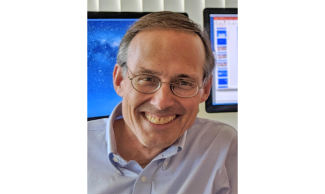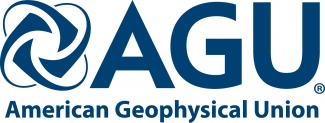PD1.5 Using Cloud Computing and Software Container Technology for Interactive Classroom Learning in Numerical Weather Prediction Michael J. Kavulich Jr., NCAR, Boulder, CO; and J. K. Wolff, K. Fossell, J. Halley Gotway, M. Harold, and S. Ng
Monday, January 13, 2020
08:30 AM - 08:30 AM
258C
1B.6 The Use of the METplus Verification and Diagnostic Capability in Forecast Evaluation across Multiple Scales and Applications Tara Jensen, NCAR, Boulder, CO; and J. Halley Gotway, G. P. McCabe Jr., J. Frimel, M. P. Row, R. G. Bullock, T. L. Fowler, D. W. Fillmore, B. Strong, M. Marquis, M. Win-Gildenmeister, J. Prestopnik, D. R. Adriaansen, and C. P. Kalb
Monday, January 13, 2020
09:45 AM - 10:00 AM
257AB
2.5 Exploring Non-Traditional Methods for Streamlining the Model Validation Process Tracy Hertneky, and T. L. Fowler and M. Harrold
Monday, January 13, 2020
11:30 AM - 11:45 AM
260
3.1 Streamlining Verification through the Enhanced Model Evaluation Tools (METplus) Tara Jensen, NCAR, Boulder, CO; and J. H. Gotway, M. P. Row, B. Strong, J. Frimel, J. J. Levit, M. Win-Gildenmeister, and M. Marquis
Monday, January 13, 2020
02:00 PM - 02:30 PM
260
The Use of METplus Verification and Diagnostic Capabilities for Evaluating Sea-Ice Predictions Lindsay R. Blank, NCAR, Boulder, CO; Developmental Testbed Center, Boulder, CO; and R. Grumbine, T. Jensen, and J. J. Levit
Monday, January 13, 2020
04:00 PM - 06:00 PM
Hall B
Adding tropical cyclone genesis verification capabilities to the Model Evaluation Tools (MET+) Daniel J. Halperin, Embry-Riddle Aeronautical Univ., Daytona Beach, FL; and K. M. Newman, J. E. Halley Gotway, and T. L. Jensen
Monday, January 13, 2020
04:00 PM - 06:00 PM
Hall B
5A.3 A Community Workflow for the Stand-Alone Regional (SAR) Configuration of the FV3 Gerard Ketefian, NOAA/ESRL/GSD and Univ. of Colorado/CIRES, Boulder, CO; and J. Beck, C. Alexander, L. Reames, G. Gayno, D. Heinzeller, L. Pan, T. Smirnova, J. Purser, D. Jovic, T. Black, J. Abeles, J. Wolff, L. Carson, J. Schramm, M. J. Kavulich Jr., J. R. Carley, and B. T. Blake
Tuesday, January 14, 2020
11:00 AM - 11:15 AM
252A
5.5 The Model Evaluation Tools (MET): Recent Additions and Enhancements John E. Halley Gotway, NCAR, Boulder, CO; and T. L. Jensen, R. G. Bullock, H. Soh, D. W. Fillmore, and J. Prestopnik
Tuesday, January 14, 2020
11:30 AM - 12:00 PM
260
3.1 Predictive Skill of African Easterly Waves in the ECMWF Subseasonal-to-Seasonal Reforecasts Weiwei Li, NCAR, Boulder, CO; Developmental Testbed Center, Boulder, CO; and Z. Wang
Tuesday, January 14, 2020
01:30 PM - 01:45 PM
212
6A.2 Combining the Common Community Physics Package with a Single Column Model to Drive NWP Physics Advancements Grant J. Firl, NCAR, and Developmental Testbed Center, Boulder, CO; and D. Heinzeller, L. Xue, and L. Bernardet
Tuesday, January 14, 2020
03:15 PM - 03:30 PM
257AB
3.4 Leveraging Cloud Computing and Software Container Technologies to Create a Portable End-to-End Numerical Weather Prediction System Kate Fossell, NCAR, Boulder, CO; and J. Wolff, J. H. Gotway, M. Harrold, and M. J. Kavulich Jr.
Tuesday, January 14, 2020
03:45 PM - 04:00 PM
155
One-Stop Shopping for Physics across Scales: From a Single-Column Model to Three-Dimensional Configurations for Weather and S2S Linlin Pan, NOAA/GSD, Univ. of Colorado/CIRES, and Developmental Testbed Center, Boulder, CO; NOAA, Boulder, CO; and L. Bernardet, D. Heinzeller, E. Kalina, G. Firl, E. Grell, K. Newman, L. Carson, and G. Grell
Tuesday, January 14, 2020
04:00 PM - 06:00 PM
Hall B
An Evaluation of Common Community Physics Package (CCPP) Physics Suites Across Scales Kathryn M. Newman, NCAR, Boulder, CO; and T. J. Hertneky, E. A. Kalina, M. Harrold, L. Pan, G. Firl, E. D. Grell, L. Carson, and M. Ek
Tuesday, January 14, 2020
04:00 PM - 06:00 PM
Hall B
Verification of the Physics Suite Testing for GFS v16 Using the Model Evaluation Tools Michelle Harrold, NCAR, Boulder, CO; and J. K. Wolff, M. Zhang, T. Hertneky, L. Bernardet, J. K. Henderson, L. R. Blank, W. Li, L. Pan, G. Firl, and T. Jensen
Tuesday, January 14, 2020
04:00 PM - 06:00 PM
Hall B
6.2 Exposing Undergraduate Students to Numerical Weather Prediction Through the Use of Software Containers and Cloud Computing Jamie K. Wolff, and S. Ng, K. R. Fossell, J. E. Halley Gotway, M. Harrold, and M. J. Kavulich Jr.
Wednesday, January 15, 2020
10:45 AM - 11:00 AM
258C
9.3 Assimilation of Dual-Pol Quality-Controlled Radial Velocity Data in the NOAA Operational Convective-Scale Forecast System
Guoqing Ge, CIRES and NOAA/ESRL/GSD, Boulder, CO; and M. Hu, S. Weygandt, and C. Alexander
Wednesday, January 15, 2020
11:15 AM - 11:30 AM
259A
9.5 The Use of the METplus Verification and Diagnostic Capability in Short-Term Forecast Evaluation Tara Jensen, NCAR, Boulder, CO; and J. Halley Gotway, C. P. Kalb, L. R. Blank, D. R. Adriaansen, and D. W. Fillmore
Wednesday, January 15, 2020
11:30 AM - 11:45 AM
252A
10B.2 A Community Effort to Unify Verification and Validation Efforts Tara Jensen, NCAR, Boulder, CO; and G. Manikin, J. A. Otkin, I. Stajner, and Z. Wang
Wednesday, January 15, 2020
01:45 PM - 02:00 PM
251
10B.3 Fostering National and International Collaboration through the Enhanced Model Evaluation Tools (METplus) Tara Jensen, NCAR, Boulder, CO; and J. Halley Gotway, M. P. Row, J. J. Levit, B. Strong, and M. Marquis
Wednesday, January 15, 2020
02:00 PM - 02:15 PM
251
11B.1 Developmental Testbed Center: Current Status and Outlook for the Future Louisa B. Nance, NCAR, Boulder, CO; and J. Beck, L. Bernardet, G. Firl, K. Fossell, M. Harrold, M. Hu, T. L. Jensen, E. Kalina, M. Marquis, K. Newman, J. K. Wolff, K. Y. Wong, and C. Zhou
Wednesday, January 15, 2020
03:00 PM - 03:15 PM
251
11B.2 The Common Community Physics Package CCPP: Unifying Physics across NOAA and NCAR Models using a Common Software Framework Dom Heinzeller, NOAA/ESRL/GSD, and Univ. of Colorado/CIRES, and Developmental Testbed Center, Boulder, CO; and G. J. Firl, L. Bernardet, L. Carson, M. Zhang, S. Goldhaber, C. Craig, D. Gill, M. Duda, and F. M. Vitt
Wednesday, January 15, 2020
03:15 PM - 03:30 PM
251
Testing the DTC’s Single Column Model for Tropical Cyclone Environment Mrinal K. Biswas, NCAR and Developmental Testbed Center, Boulder, CO; and G. Firl, M. Ek, and J. Zhang
Wednesday, January 15, 2020
04:00 PM - 06:00 PM
Hall B
The Python-based MPMC Test Suite for NOAA Operational Data Assimilation Systems (GSI/EnKF) G. Ge, CIRES and NOAA/ESRL/GSD, Boulder, CO; and M. Hu, C. Zhou, and D. Stark
Wednesday, January 15, 2020
04:00 PM - 06:00 PM
Hall B
Enhancements to Cloud Overlap Radiative Effects for Weather Forecasting and Tropical Cyclone Prediction Michael J. Iacono, AER, Lexington, MA; and J. M. Henderson, L. Bernardet, E. Kalina, M. K. Biswas, K. M. Newman, B. Liu, Z. Zhang, and Y. T. Hou
Wednesday, January 15, 2020
04:00 PM - 06:00 PM
Hall B
Track Centered Moving Grids for Tropical Cyclone Forecast Assessment in the Model Evaluation Tools (MET) Verification Package David W. Fillmore, 3090 Center Green Dr., Boulder, CO; NCAR, Boulder, CO; and T. J. Hertneky, K. M. Newman, E. A. Kalina, R. G. Bullock, M. K. Biswas, J. E. Halley Gotway, and T. L. Jensen
Wednesday, January 15, 2020
04:00 PM - 06:00 PM
Hall B
12A.3 Physics Interoperability as a Strategy for Advancing NOAA’s Unified Forecast System Physics Suites Ligia Bernardet, CIRES/Univ. of Colorado, NOAA/GSD and Developmental Testbed Center, Boulder, CO; and G. J. Firl, D. Heinzeller, L. Carson, M. Zhang, J. Schramm, and L. Nance
Thursday, January 16, 2020
11:00 AM - 11:15 AM
257AB
12A.5 Process-oriented Diagnostics to Inform the Physics Suite of Future GFS Implementations using NOAA's Unified Forecast System Weiwei Li, NCAR, Boulder, CO; and L. Bernardet, M. Zhang, L. Pan, M. Harrold, J. Wolff, J. K. Henderson, T. Hertneky, L. R. Blank, G. J. Firl, M. ek, J. Dudhia, T. Jensen, Z. Wang, and L. Nance
Thursday, January 16, 2020
11:30 AM - 11:45 AM
257AB
13B.6 Advances Toward an Operational Convection-Allowing Ensemble Prediction System in the Unified Forecast System at NOAA J. R. Carley, NOAA, College Park, MD; and B. T. Blake, T. L. Black, E. Rogers, E. Aligo, J. Abeles, L. C. Dawson, T. Lei, Y. Lin, M. E. Pyle, P. Shafran, E. Strobach, X. Zhang, J. S. Kain, C. R. Alexander, L. J. Wicker, L. M. Harris, and J. K. Wolff
Thursday, January 16, 2020
02:45 PM - 03:00 PM
257AB









